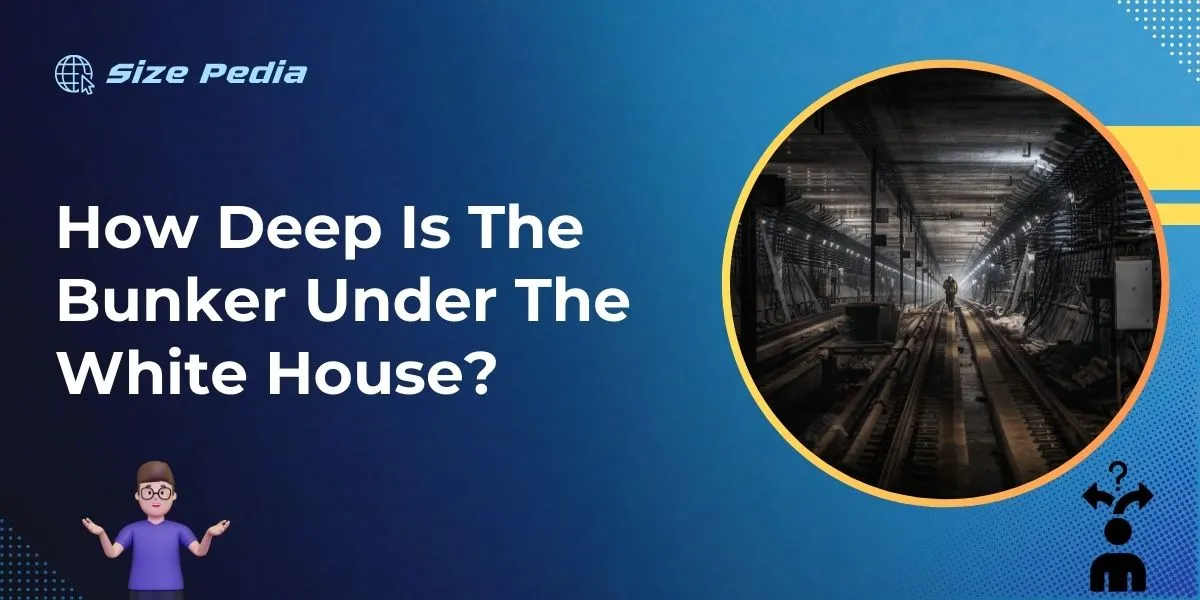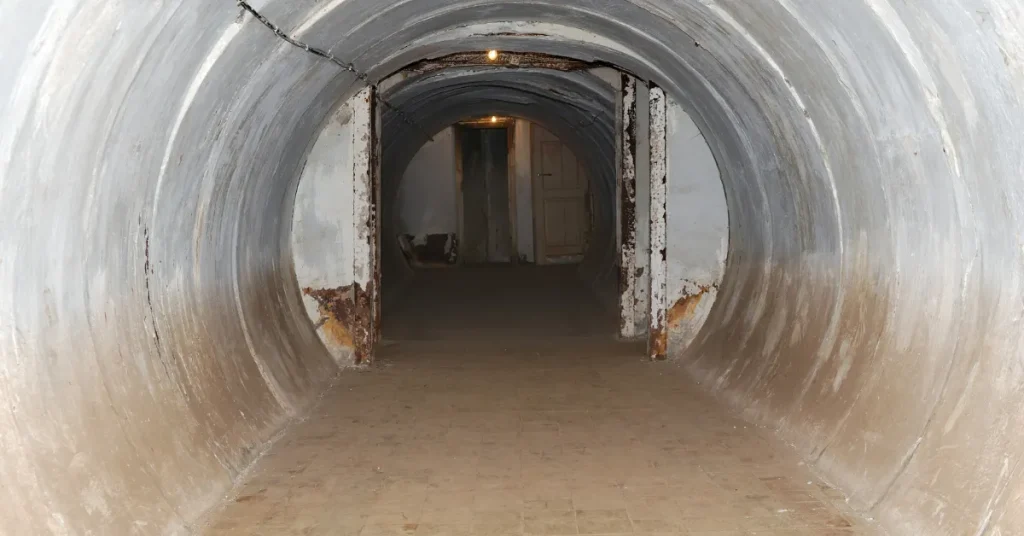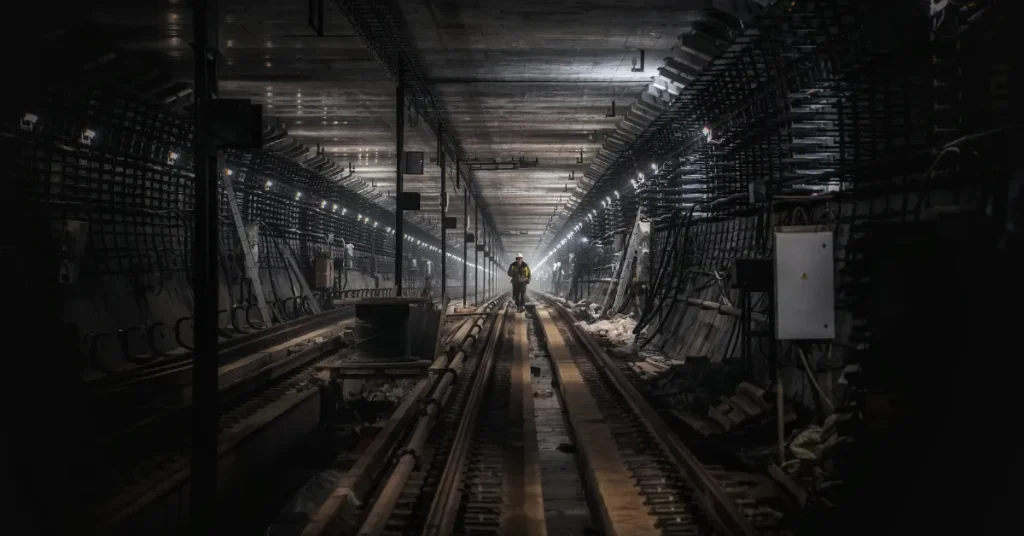The exact depth of the bunker beneath the White House is classified. Reports suggest it lies several stories underground.
The White House, a symbol of American leadership, houses more than the nation’s leader and their family; it conceals a state-of-the-art bunker, shrouded in secrecy and designed for protection during emergencies.
This underground fortress is part of the United States Continuity of Government Plan, which ensures the country’s control remains uninterrupted during catastrophic events.
While specifics about the bunker, such as depth and layout, are not publicly disclosed for security reasons, it’s believed to be equipped with the latest in communication and life support systems.
The bunker’s existence was thrust into the public eye especially after events like the September 11 attacks, highlighting the necessity for such a secure refuge.
This secure location epitomizes the careful balance between transparency and the need for confidentiality in matters of national security.

The White House Bunker Revealed
Mysteries shroud the depths beneath the iconic White House, where secrets lie in corridors designed for the utmost security. The bunker, a term resembling scenes from a spy movie, serves as a sanctuary for the president during times of crisis.
It sparks curiosity and questions: how deep is this subterranean fortress?
Historical Roots Of Presidential Safety Measures
The inception of presidential safety protocols traces back to times when threats were less sophisticated but no less serious. Over the years, layers of concrete and confidentiality have shielded these measures from public knowledge.
Specific details remain classified, but what is known is that each addition to the safety measures was a response to the uncertainties of the era.
- World War II sparked the initial need for a secure place.
- The Cold War amplified the demand for a nuclear fallout shelter.
- After 9/11, upgrades focused on modern threats.
Evolution Of The Presidential Emergency Operations Center
The Presidential Emergency Operations Center (PEOC) embodies resilience and adaptability.
Born in the dawn of the nuclear age, it has since morphed to confront ever-changing challenges. As the world grew more complex, so did the capabilities of this underground bastion.
| Year | Upgrade |
| 1940s | Initial construction for war-time emergencies |
| 1960s | Modernization for nuclear readiness |
| Post-9/11 | Technological enhancements |
While its exact depth remains undisclosed, the PEOC represents the pinnacle of presidential protection, rumored to lay dozens of feet underground, beneath layers of security and history.
Peeking Beneath The Oval Office
Deep below the iconic White House lies a bunker shrouded in secrecy. Its existence is rarely acknowledged, yet it forms a vital part of American history and current security protocols.
This subterranean fortress, often referred to as the Presidential Emergency Operations Center (PEOC), is a safe haven designed to protect the President and key staff in the event of an emergency.
Structural Composition And Features
The bunker’s design is a marvel of engineering, intended to withstand catastrophic events.
- Reinforced walls capable of resisting blasts
- Multiple layers of concrete and steel
- Advanced air-filtration systems to ensure a breathable environment
Encased in thicknesses rumored to be several meters, the bunker’s exact depth remains confidential.
Technological Upgrades Over The Decades
Since its creation, the bunker has undergone numerous renovations. Each technological advancement has ensured state-of-the-art equipment is in place.
- Communication systems keep the President connected to military and civilian advisors.
- Up-to-date servers and networks maintain vital data flows.
- Power redundancy guarantees an uninterrupted energy supply.
These improvements ensure the bunker evolves with the times, remaining a modern fortress beneath the feet of those in the Oval Office.
The Dimensions Of Secrecy

Hidden beneath the iconic White House lies a fortress. Few details emerge, shrouded in the utmost secrecy. Yet, the question burns: how deep and vast is this subterranean bunker?
Estimating The Scale: Depth And Expanse
The exact dimensions of the White House bunker remain classified. Speculation runs wild among experts. Some estimate depths ranging from several stories to potentially over a hundred feet below ground level.
This secure facility, known as the Presidential Emergency Operations Center (PEOC), is designed to withstand catastrophic events.
| Feature | Estimated Speculation |
| Depth | 50-100 feet or more |
| Width | Varies greatly |
| Length | Equally varied |
The bunker’s size must accommodate essential personnel. Its expanse allows for operations centers, medical facilities, and living quarters.
Confidentiality And Public Knowledge
The White House’s underbelly is a blend of mystery and national security. Public details are scant. This secrecy is by design, protecting the President during emergencies.
- Public knowledge remains limited.
- Details emerge only from historical events or declassified reports.
- The imperative is clear: national security trumps public curiosity.
While exact blueprints are undisclosed, the bunker’s essence stays ingrained in US security strategy. Its depths form a shield, safeguarding democracy’s highest office.
Protection Strategies During Crises
Protection strategies during crises play a crucial role in safeguarding the nation’s leaders. The bunker under the White House is shrouded in mystery, yet its depths offer unparalleled security. Let’s delve into its history and accessibility.
Case Studies: Past Use And Effectiveness
The White House bunker, also known as the Presidential Emergency Operations Center (PEOC), has seen action during key moments in history. Its effectiveness is evident in several case studies:
- 9/11 Terror Attacks: Officials quickly secured in the bunker, coordinating a national response.
- Cuban Missile Crisis: The bunker stood ready for the worst-case scenario, demonstrating immense reliability.
These instances highlight the bunker’s critical role in providing a shield against threats, ensuring seamless communication and decision-making.
Bunker Accessibility For High-level Officials
Bunker accessibility is vital for continuity of government operations. During a crisis, evacuation protocols are swift:
- Immediate alert to evacuate is issued to key personnel.
- Officials are guided via secure routes to reach the bunker.
- Security measures ensure only authorized access.
| Position | Access Level | Evacuation Priority |
| President | Top Priority | Immediate |
| Vice President | High Priority | Immediate |
| National Security Team | Essential | High |
The table reflects the stringent protocols that ensure the right officials are protected and can govern, even from deep within the White House’s secret sanctuary.
Modernization And Future Proofing

The White House, a symbol of American leadership, is more than its iconic exterior. Beneath it lies a bunker, a sanctuary against threats. This underground fortress adapts to the modern world.
Recent Renovations And Enhancements
Security upgrades are crucial for White House safety. The bunker undergoes technological enhancements regularly.
Here’s what the latest renovations include:
- Reinforced structures: To withstand modern weapons.
- Advanced communication systems: For constant contact.
- Eco-friendly solutions: Solar panels for energy independence.
Anticipating Threats In The 21st Century
The bunker is preparing for future risks. It’s not just about bricks and mortar; it’s about staying ahead.
Key focus areas include:
- Cybersecurity measures: To guard against digital attacks.
- Biological defenses: Prepared for health emergencies.
- Enhanced surveillance: For real-time threat detection.
These updates ensure the bunker remains a safe haven in the unexpected future.
FAQs About How Deep is the Bunker under the White House
How Deep Is The White House Bunker?
The White House bunker, also known as the Presidential Emergency Operations Center (PEOC), is located beneath the East Wing. Its exact depth is classified, but it’s estimated to be several stories underground to ensure protection.
When Was The White House Bunker Built?
The original White House bunker was constructed during World War II, in 1942, under President Franklin Roosevelt. It has since been upgraded multiple times to enhance security and technology.
Can The White House Bunker Withstand Nuclear Attacks?
The specifics of the White House bunker’s defenses are classified. However, it is widely believed to be designed with advanced construction methods meant to withstand various threats, including nuclear attacks.
Who Can Access The Bunker Under The White House?
Access to the White House bunker is strictly limited to the President, designated staff, and select government officials during emergency situations. Security protocols are in place to ensure restricted entry.
Conclusion
Exploring the depths of the White House bunker reveals a fascinating side of presidential safety. This subterranean fortress, with its undisclosed depth, underscores the lengths taken to protect U. S.
Leaders. It’s a testament to national security’s evolution, mirroring America’s commitment to its highest office.
Whether for historical intrigue or modern-day assurance, the bunker’s depth remains a symbol of resilience.
Resources:
1. https://www.whitehouse.gov/about-the-white-house/presidents/john-quincy-adams/
